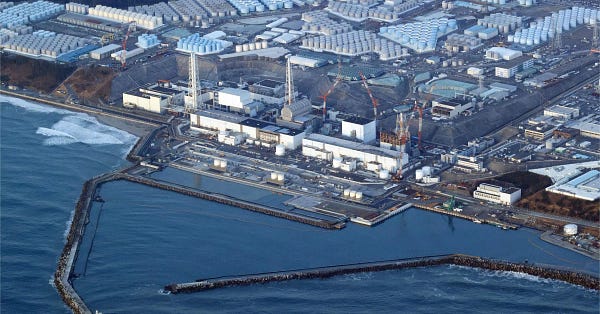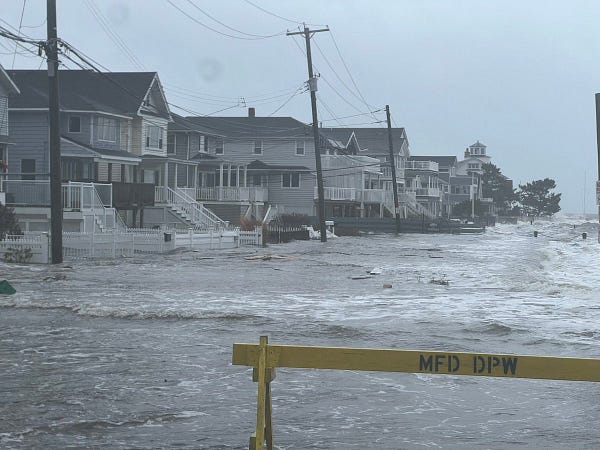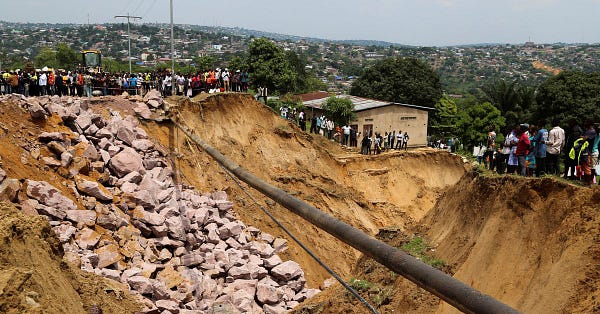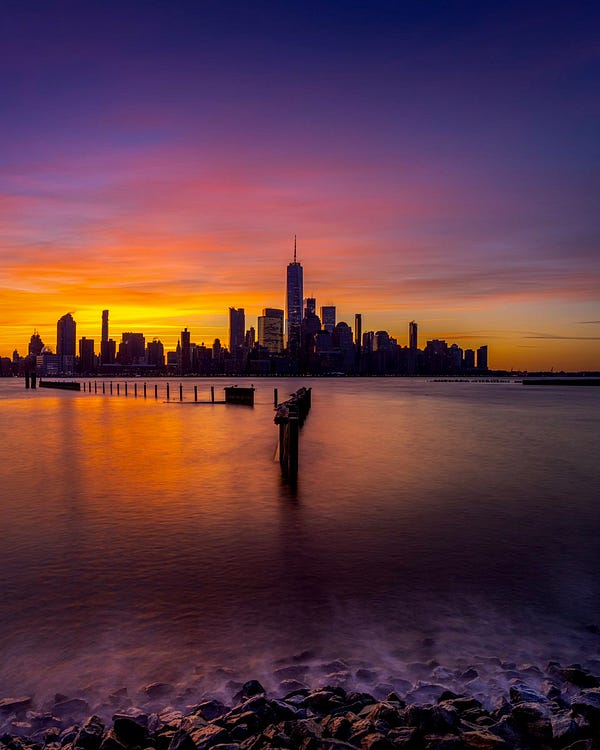Destabilized Saturday Edition #49
Too little water in the southwest, the Post Office goes electric, propping up the Florida insurance market, "charge it to the Underhills", whale hug
There have been a flurry of stories recently about insufficient water in the southwest United States.


The most illuminating one I’ve read is by Abraham Lustgarten in Pro Publica. I recommend it (18-minute read). Here are my takeaways:
The first thing to say is the situation is serious:
By this spring, Lake Powell shrank to 24% of its capacity, its lowest levels since the reservoir filled in the 1960s. Cathedral-like sandstone canyons were resurrected, and sunlight reached the silt-clogged floors for the first time in generations. The Glen Canyon Dam itself towered more than 150 feet above the waterline. The water was just a few dozen feet above the last intake pipe that feeds the hydropower generators. If it dropped much lower, the system would no longer be able to produce the power it distributes across six states. After that, it would approach the point where no water at all could flow into the Grand Canyon and further downstream.
So far, the upper half of the Colorado River basin is getting the worst of it:
Across the Upper Basin, the small reservoirs that provide the region’s only buffer against bad years are also emptying out. Flaming Gorge, on the Wyoming-Utah border, is the largest, and it is 68% full. The second largest, Navajo Reservoir in New Mexico, is at 50% of its capacity. Blue Mesa Reservoir, on the Gunnison, is just 34% full. Each represents savings accounts that have been slowly pilfered to supplement Lake Powell as it declines, preserving the federal government’s ability to generate power there and obscuring the scope of the losses. Last summer, facing the latest emergency at the Glen Canyon Dam, the Department of Interior ordered huge releases from Flaming Gorge, Blue Mesa and other Upper Basin reservoirs. At Blue Mesa, the water levels dropped 8 feet in a matter of days, and boaters there were given a little more than a week to get their equipment off the water. Soon after, the reservoir’s marinas, which are vital to that part of Colorado’s summer economy, closed. They did not reopen in 2022.
But the upper basin states aren’t taking it lying down:
[T]he Upper Basin states are all attempting to store more water within their boundaries. Colorado has at least 10 new dams and reservoirs either being built or planned. Across the Upper Basin, an additional 15 projects are being considered, including Utah’s audacious $2.4 billion plan to run a new pipeline from Lake Powell.
…In November, Democratic Gov. Jared Polis proposed the creation of a new state task force that would help him capture every drop of water it can before it crosses the state line. It would direct money and staff to make Colorado’s water governance more sophisticated, defensive and influential.
The federal government has pressured the states that depend on the Colorado to reach a collective agreement to conserve water with the threat that unless they do, the feds will impose one unilaterally. But deadlines have come and gone and so far the states haven’t come close to an agreement and the feds haven’t pulled the trigger.
Each state retreated to its corners, where they remain. The 60-day deadline came and went, with no commitments toward any specific reductions in water use and no consequences. The Bureau of Reclamation has since set a new deadline: Jan. 31.
—
Some high-level takeaways:
Water rights – who gets to use how much of the water in the Colorado River – are still governed by what is essentially a “finders keepers” principle: the earliest (European) settlers who staked a claim to the water decades ago still have senior claims on it. It’s not hard to understand how we ended up with these rules, but it doesn’t make it any less crazy that this is how we do things (more on this below).
The cuts required to get the system back into rough balance would be deep and painful.
What is usually presented as a national public policy issue is actually an increasingly nasty inter-state fight.
This has to be a political hornet’s nest for the federal government since Arizona and Nevada are both swing states.
A few things I don’t fully understand yet:
Exactly where federal authority begins and state authority ends.
How, logistically, Arizona and California are able to take whatever amount of water they want (as the article says they do) when, I think, much of the water has to flow through the upper part of the basin first.
How much water is available in underground aquifers. Specifically, whether it’s possible it’s enough to make the now-insufficient Colorado River flow volume a less existential issue for the states of the southwest.
Since most of the water in the Colorado goes to agriculture, why the solution isn’t simply to reduce that amount on the margin to secure sufficient water for the millions of residents who depend on it. (There would be impacts on food supply, and therefore cost, which may be one reason. Food supply is also a reason this problem has national ramifications, not just regional ones.)
Importantly, the overall context is growing more difficult:
Here’s the terrible truth: There is no such thing as a return to normal on the Colorado River, or to anything that resembles the volumes of water its users are accustomed to taking from it. With each degree Celsius of warming to come, modelers estimate that the river’s flow will decrease further, by an additional 9%. At current rates of global warming, the basin is likely to sustain at least an additional 18% drop in its water supplies over the next several decades, if not far more. Pain, as Mitchell puts it, is inevitable.
Water supply in the southwest is a wicked problem, but there is hope. After a devastating multi-year drought ended in Australia a little over a decade ago, the country:
jettisoned its coveted system of water rights, breaking free of history and prior appropriation similar to the system of first-come-first-served the American West relies on. That left it with a large pool of free water and political room to invent a new method of allocating it that better matched the needs in a modern, more populous and more urban Australia and better matched the reality of the environment.
—
Happy holidays!
My Work
Russia and Roe v. Wade (link)
One of the core beliefs here at Destabilized is that the big discontinuities we’re living through – climate change, the internet, and democratic division and political instability – are interconnected in important ways. They can’t be properly understood without seeing how they interact and influence one another, and their total impact is far greater than even the immense sum of the parts.
Is it just a coincidence, then, that reproductive freedom in the U.S. and peace in Europe are both being ended within a several-month period? No, it isn’t, not entirely anyway. Russia’s invasion of Ukraine and the reversal of Roe v. Wade are connected, and in a way that reveals the vast implications of the growing political and social divisions in the United States.
Interesting Reads
Why Republicans are coughing up billions of dollars to save Florida’s insurance market (link)
In a typical market, property insurance companies take in money from all their customers’ premiums and pay out to the subset of customers whose homes suffer damage. The revenue from premiums is supposed to guarantee that a company can pay out customers even under the most catastrophic circumstances. But that has become impossible for most Florida insurers to do... In theory, companies could raise prices to account for these costs, but in practice those prices would be too high for most customers to afford.
Tweets of the Week







Extreme Weather Watch



Creeping Fascism Watch


(Crucial context: Zelensky is Jewish.)
Progress Joy and Hope


























Great issue. This newsletter keeps getting better!